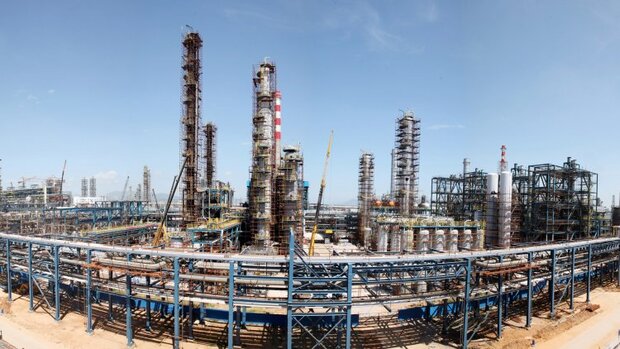As the second-biggest source of revenue for Iran, the petrochemical industry is one of the most important pillars of the country’s resilient economy and one of the main suppliers of foreign currency for the country so this industry’s self-sufficiency has been put on the agenda for more than two decades.
The development of the industry became even more significant since the re-imposition of US sanctions on the country’s oil industry back in November 2018.
In addition to various equipment and machinery, in its most recent efforts for complete independence, the Oil Ministry has initiated several comprehensive programs for the indigenization of the knowledge for producing major catalysts used in the petrochemical industries.
Catalyst is a substance that increases the rate of a chemical reaction in the process of creating a petrochemical product; the catalyst itself is not consumed in the catalyzed reaction and can continue to act repeatedly. Because of this, only very small amounts of catalyst are required to alter the reaction rate in most cases.
Catalysts are very expensive substances and currently, the country is spending millions of dollars every year on importing such products into the country, producing such catalysts inside the country would make a huge difference in the profitability rate of the petrochemical plants.
Iranian petrochemical industry is currently using 40 different types of catalysts which cost the industry $260 million annually.
In this regard, the country’s Petrochemical Research and Technology Company (PRTC) has played a very significant role in collaborating with domestic knowledge-based companies for working on innovative research projects for producing the mentioned catalysts.
The PRTC’s Managing Director Ali Pajouhan announced on Monday that over 70 percent of the catalysts needed in the country’s petrochemical industries are going to be indigenized by the end of the Iranian calendar year 1400 (March 20, 2022).
Stating that his company has awarded mass production licenses to six research projects for producing innovative products in this industry, Pajouhan noted that several new contracts for implementing such research projects are also going through final processes to be signed with various domestic knowledge-based companies.
He mentioned the license for a heavy polyethene production line in Tabriz Petrochemical Complex with a capacity of 310,000 tons per year as one of the mentioned projects and said this production line will also include a catalyst production unit.
Emphasizing that by granting domestic licenses, in addition to saving the costs of getting the licenses from abroad, all engineering stages will also be carried out inside the country, he added: "One of the most important advantages is to use the potential of domestic companies and to prevent the outflow of capital in this field.”
“Because when a license is issued by a foreign company, the company urges the customer to buy some equipment exclusively, but when the license is issued inside the country, in addition to reducing costs, more equipment is also indigenized because it is not necessary to buy equipment from the companies suggested by the licensor.”
Back in March, Pajouhan had said that the National Petrochemical Company (NPC), in collaboration with domestic companies, is planning to indigenize the knowledge for producing nine major catalysts used in the petrochemical industries within the next two years.
“Currently, the knowledge for producing 16 of the mentioned 40 types has been indigenized which would save the country $105 million every year.” The official said, adding, “We plan to produce over $100m worth of petrochemical catalysts annually, by the end of the Iranian calendar year of 1400.”
Mass production of petrochemical catalysts would also mean that Iran could become an exporter of such products and besides the significant increase in the revenues from the industry, further cement its role as one of the world's and region’s major petrochemical producers.
With abundant hydrocarbon reserves and new private sector investments, Iran is working hard to broaden the scope of its petrochemical industry, and indigenizing the catalysts needed in this industry would be a huge step toward the realization of the motto of the current Iranian calendar year which is named the year of “Surge in Production” by the Leader of the Islamic Revolution Seyed Ali Khamenei.
ZZ/TT


























Your Comment